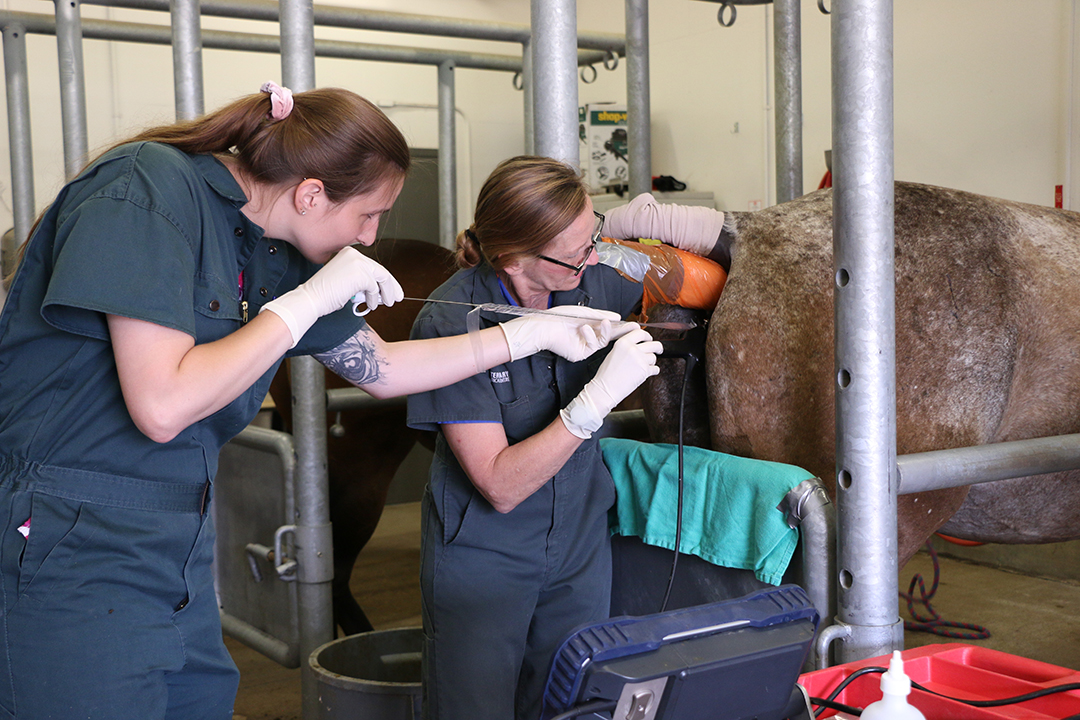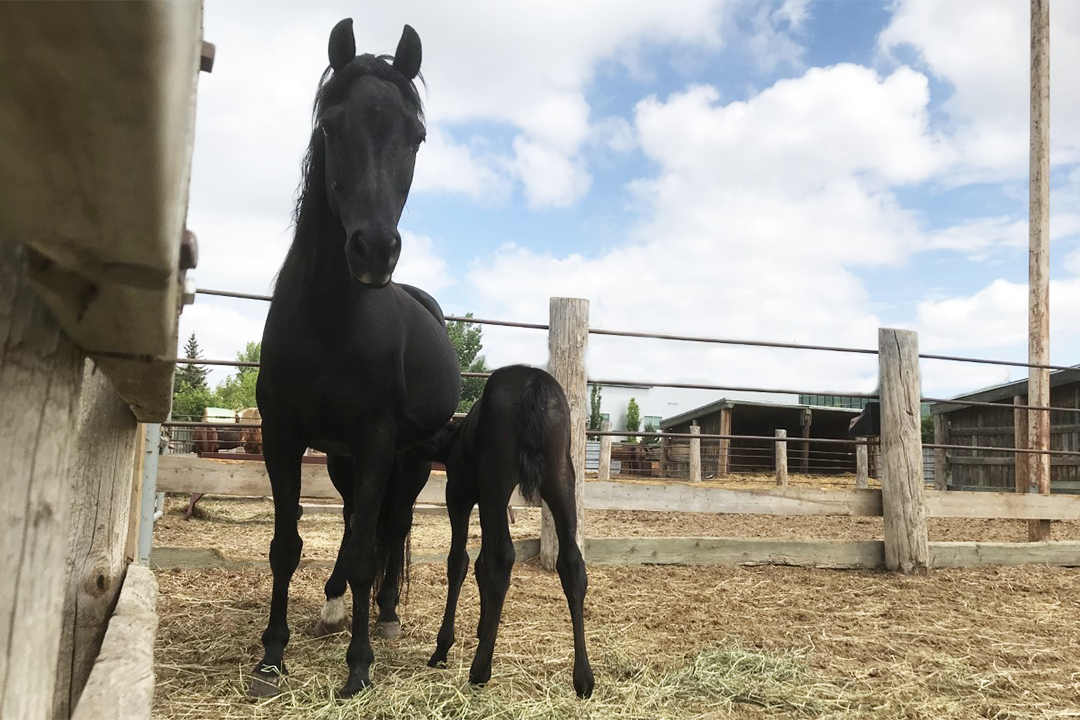
Communication breakdown results in early pregnancy loss
Even before birth, extensive communication occurs between an infant mammal and its mother — not through speech or body language, but through chemical interaction inside the uterus.
By Ashlyn KettererThe maternal recognition of pregnancy (MRP), one of the earliest communications that occurs during pregnancy between the embryo and the mother, is the signal produced by the embryo alerting the mother's body of the pregnancy.
Although the MRP signal is clearly understood in other domestic species, it remains a mystery in horses — a mystery that researchers from the Western College of Veterinary Medicine (WCVM) are hoping to solve.
“As a clinical doctor, I encounter mares regularly who fail to recognize that the pregnancy is there and the embryo is lost,” says Dr. Claire Card, a board-certified theriogenologist and a professor in the WCVM’s Department of Large Animal Clinical Sciences.
“We would like to solve that so we could figure out treatments or ways to prevent that from happening. It’s a big problem for us.”
Card is collaborating with WCVM graduate student Dr. Mariana Diel de Amorim and theriogenology resident Dr. Maria Lopez to investigate the MRP process in mares — a communication that they both consider key to a successful pregnancy.
Early pregnancy in horses is unique from other domestic species in several ways. First, the embryo must be fertilized and needs to secrete a molecule called prostaglandin E to descend into the uterus from the uterine tubes. Once inside, the equine embryo migrates throughout the uterus. It’s during this migration that the MRP signal most likely takes place.
“I would describe it as the time interval in which the embryo secretes a communication to the endometrium and from the endometrium to the ovary in which the embryo is telling the mare, ‘I’m here — I’m here and please don’t destroy me,’” says Lopez.

The researchers are investigating the role of these prostaglandins, a family of compounds that are involved in many of the body’s processes and likely play a role in the MRP signal. Considerations such as when these prostaglandins turn on and off, how much of them are secreted, how the secretion is directed — all of these factors play a role in regulating biological processes.
“There have been a lot of reports that maybe a combination between prostaglandin E and prostaglandin F2 alpha in small quantities are the ones that are causing the mobility of the embryo through the whole uterus,” says Lopez.
“But it’s still an assumption and hasn’t been proven before.”
Since Card and Lopez suspect that the MRP signal relies on a change in the balance between prostaglandin E and prostaglandin F2 alpha, they are administering prostglandin E into the uterus of research mares — a process that alters the balance between the two compounds.
By observing the impact of that change on the MRP signal, they hope to gain a greater insight into the MRP process.
“Horses are probably quite distinct in the way that they recognize pregnancy, and mares probably have their own special things that they do,” says Card. “We have some insight into what those are, but … it takes a big team to do this kind of work and it’s expensive.”
“Economically, it has a huge impact on the equine industry. We lose a lot of valuable genetics from the equine industry simply because we don’t have a lot of the answers to these questions.”
Card and her team’s MRP research work is supported by a five-year, $140,000 research grant from Natural Sciences and Engineering Research Council of Canada (NSERC).
Ashlyn Ketterer of Enderby, B.C., is a second-year veterinary student at the Western College of Veterinary Medicine (WCVM) whose summer research position was supported by the Townsend Equine Health Research Fund. Her story is part of a series of articles written by WCVM summer research students.
